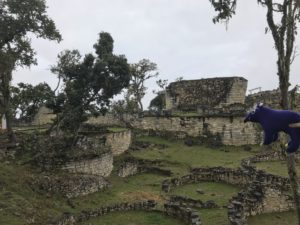Thank you Riverside Elementary second grade students for the wonderful pictures!

Muchas gracias a los estudiantes del segundo grado de la escuela Riverside por ¡estos lindos dibujos!
Bilingual Books for Children
By Patricia
By Patricia
The students at Riverside Elementary learn about geography and the Amazon Rain Forest.
Los estudiantes de Riverside Elementary aprenden sobre la selva del Amazonas y la geografía del área.
They also wanted to know what had happened to Brigitte’s hair. I told them Brigitte is a much loved older doll with hair issues!
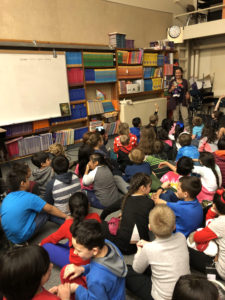 También me preguntaron qué le había pasado al cabello de Brigitte. Les dije que Brigitte es una muñequita vieja muy querida con ¡problemas de peinado!
También me preguntaron qué le había pasado al cabello de Brigitte. Les dije que Brigitte es una muñequita vieja muy querida con ¡problemas de peinado!
By Patricia
Here I am again, Junior the Purple Tapir, reporting on my past trip to Peru: In the deep cloud forests of Peru lives the Andean cock-of-the-rock – a magnificent bright orange bird that I was lucky to see while trekking to the Gocta Falls in the department of Amazonas. I could not believe my eyes, I had just taken this picture of another cock-of-the-rock at the Lima zoo!
These birds, Rupicola peruvianus (scientific name!), eat mainly fruit, insects and whatever small snake or rodent they can find. They are very shy and live deep in forested ravines up to 2,400 meters (7,875 ft).
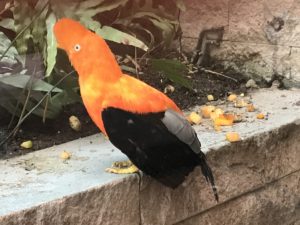
Aquí, Junior el tapir morado, reportando nuevamente acerca de mi viaje al Perú: Metidos en los bosques nubosos o Yunga, vive el gallito de las rocas, una hermosa ave de plumaje anaranjado, que observé mientras caminaba a la Catarata del Gocta en el departamento de Amazonas. ¡Increíble! Acababa de tomar esta foto de otro gallito de las rocas en el zoo de Lima.
Estos pájaros, Rupicola peruvianus (nombre científico) comen fruta, insectos y alguna culebrita o roedor pequeño que se encuentren. Son muy tímidos y viven en las quebradas de bosques hasta los 2,400 m. de altura.
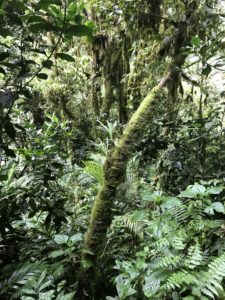
By Patricia
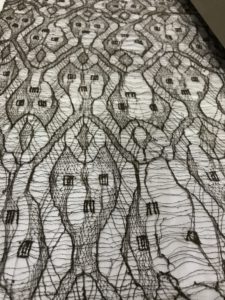
Imagine living more than 2000 years ago in Peru and weaving beautiful cloth out of cotton, wool or feathers! The ancient Peruvians were excellent weavers and some of their work is displayed at the Amano Museum in Lima. Take a look:
What do you see? ¿Qué ves?
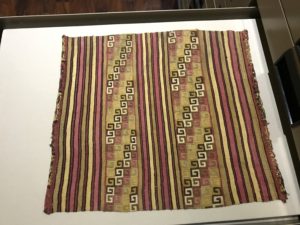
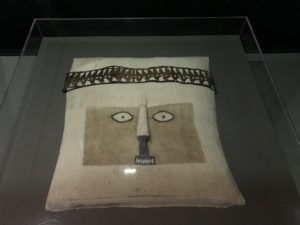
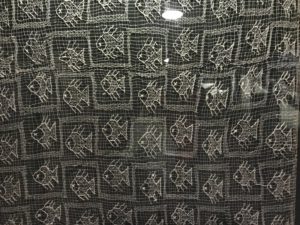
By Patricia
After a long trip back I am in Portland, Oregon, keeping warm by the fire with my friend Brady, 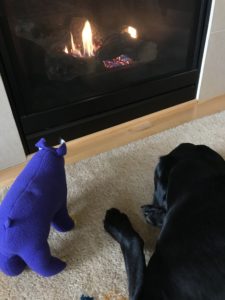 the lab. Although he is not a tapir, we have learned to respect each other and we get along very well.
the lab. Although he is not a tapir, we have learned to respect each other and we get along very well.
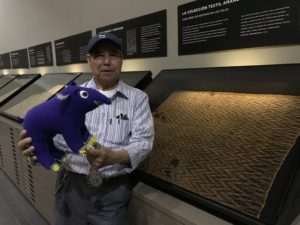
Today I would like to say ” thank you” to all the friends I met in Peru, specially to Luis from the Amano Museum, and to little Laurenz, only one and a half and already a hiker!
The Amano Museum is a pre-Columbian textile museum. But, what does ” pre-Columbian” mean? It means that the textiles or weavings were created before Christopher Columbus landed in the American continent in 1492. Keep on reading to see some wonderful textile samples.
Después de un largo viaje estoy de regreso en Portland, Oregón, sentado frente al fuego con mi amigo Brady, el labrador. Aunque él no es un tapir, hemos aprendido a respetarnos y nos llevamos muy bien. Hoy quiero decirles “gracias”a todos los amigos que conocí en el Perú, especialmente a Luis del Museo Amano y al pequeño Laurenz, un caminante de ¡sólo un año y medio!
El Museo Amano es el museo textil pre-colombino de Lima. Pero, ¿qué quiere decir “pre-colombino? Quiere decir que los textiles o tejidos fuero creados antes que Cristóbal Colón llegara al continente Americano en 1492. Sigue leyendo para ver unas muestras maravillosas de tejidos.
By Patricia
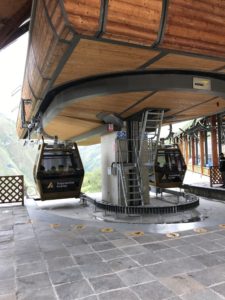
Did you know that in the Department of Amazonas, in northern Peru, there is a pre Inca culture called The Chachapoyas? The main city of the “cloud people”, as the Chachapoyas are known, is the Kuelap Citadel. A citadel is a fortress city, something like a castle. Built around 1,200 years ago, the Kuelap Citadel sits on a mountain, covered in mist and at its peak housed around 3,000 people. First, I hopped on a cable car and traveled through the clouds to the citadel. I could see everything from the cable car!
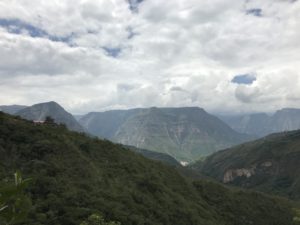
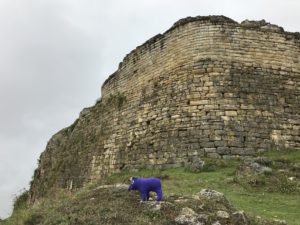
¿Sabían que en el Departamento de Amazonas, en el norte del Perú, hay una cultura pre Inca llamada Chachapoyas? La ciudad principal de los “hombres que habitan en las nubes” o Chachapoyas, es la Ciudadela de Kuélap. Una ciudadela es una ciudad fortaleza o un castillo. La Ciudadela de Kuélap se construyó hace 1,200 años y está sobre una montaña cubierta de nubes. Allí vivían 3,000 personas, más o menos. Primero me subí a un funicular y viajé por las nubes hasta la ciudadela. ¡Podía ver todo!
